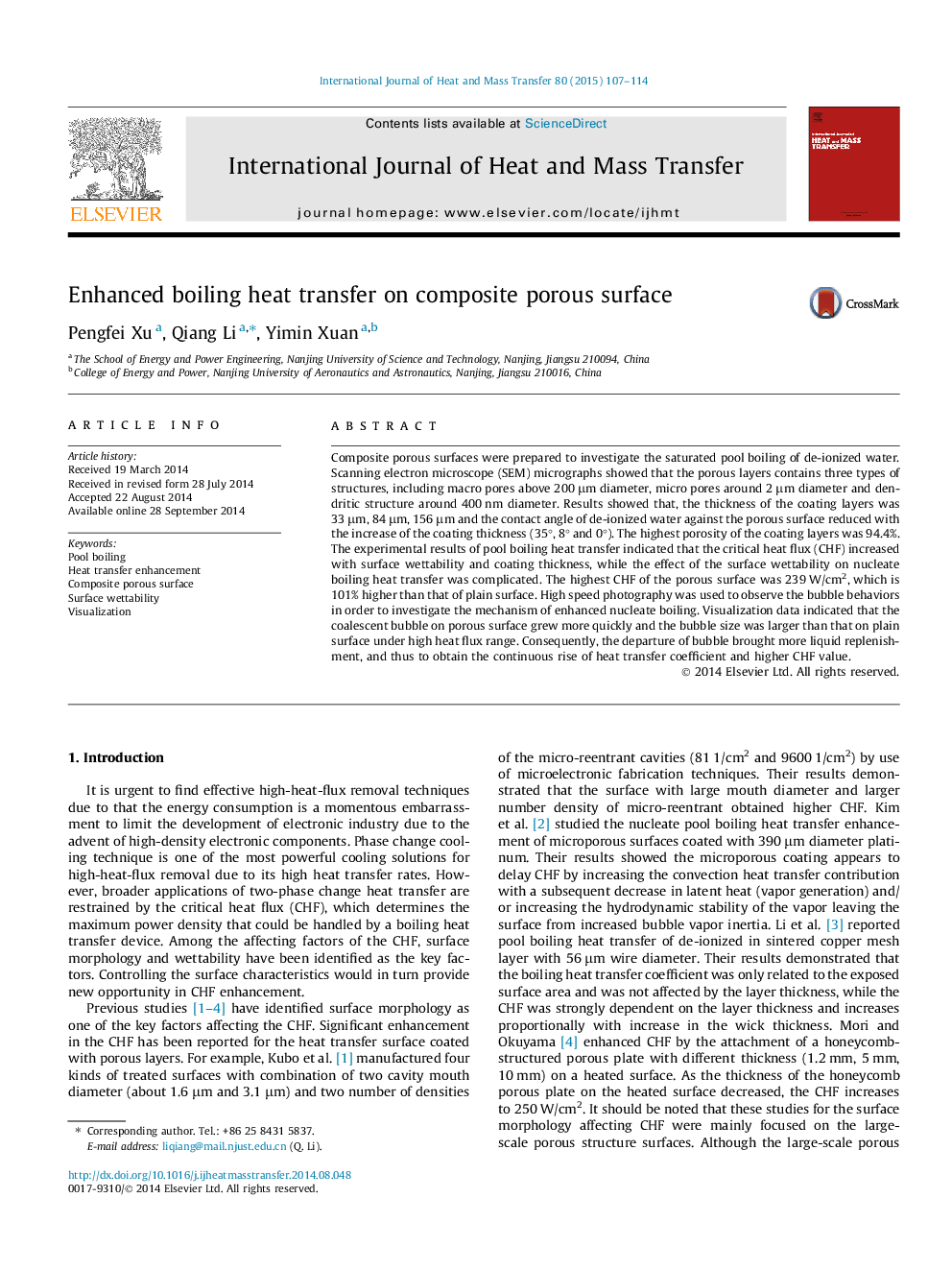| Article ID | Journal | Published Year | Pages | File Type |
|---|---|---|---|---|
| 657251 | International Journal of Heat and Mass Transfer | 2015 | 8 Pages |
Composite porous surfaces were prepared to investigate the saturated pool boiling of de-ionized water. Scanning electron microscope (SEM) micrographs showed that the porous layers contains three types of structures, including macro pores above 200 μm diameter, micro pores around 2 μm diameter and dendritic structure around 400 nm diameter. Results showed that, the thickness of the coating layers was 33 μm, 84 μm, 156 μm and the contact angle of de-ionized water against the porous surface reduced with the increase of the coating thickness (35°, 8° and 0°). The highest porosity of the coating layers was 94.4%. The experimental results of pool boiling heat transfer indicated that the critical heat flux (CHF) increased with surface wettability and coating thickness, while the effect of the surface wettability on nucleate boiling heat transfer was complicated. The highest CHF of the porous surface was 239 W/cm2, which is 101% higher than that of plain surface. High speed photography was used to observe the bubble behaviors in order to investigate the mechanism of enhanced nucleate boiling. Visualization data indicated that the coalescent bubble on porous surface grew more quickly and the bubble size was larger than that on plain surface under high heat flux range. Consequently, the departure of bubble brought more liquid replenishment, and thus to obtain the continuous rise of heat transfer coefficient and higher CHF value.
